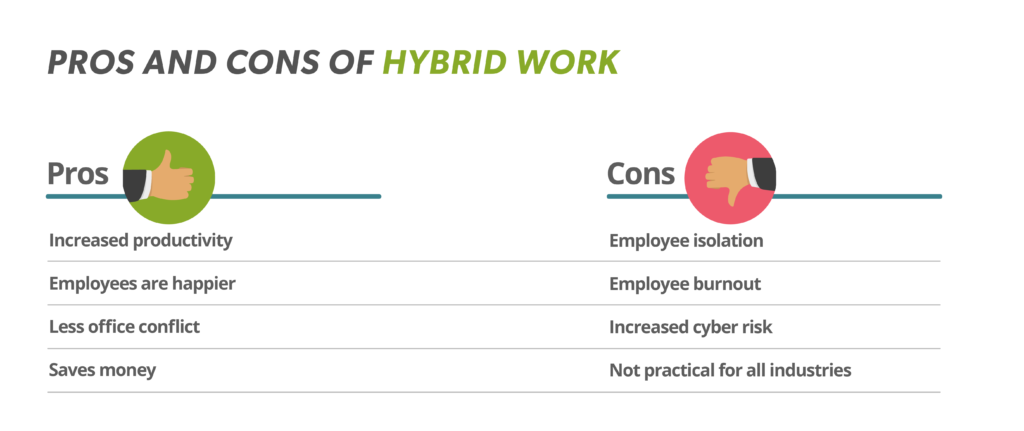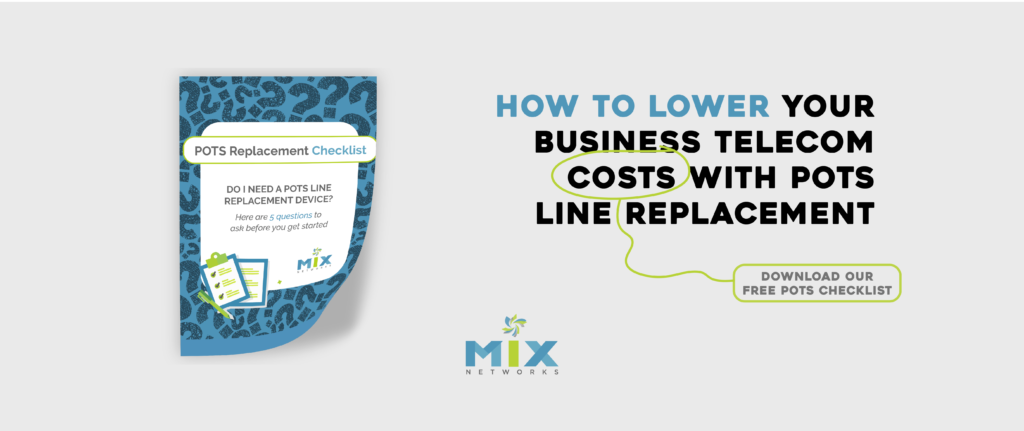As with remote work, hybrid work has been an arrangement that was around well before COVID-19 rocked our working norms. According to the World Economic Forum, hybrid work first emerged in the 1970s, along with remote work. Still, as of the pandemic’s start, only 5% of Americans were participating in this type of working arrangement. Hybrid work peaked in the spring of 2020, with 60% of Americans reporting working with this model, and was still at 40% in October of 2021. Just like remote work – hybrid work is here to stay.
If you are considering a hybrid work arrangement for your company or are already doing so, here are the pros and cons of the strategy:
Pros and Cons of Hybrid Work
Prior to the pandemic, the Chinese organization CTrip performed an experiment. In 2013, they randomly chose volunteers from their 16,000-person call center to work from home for nine months or work in the office. What they found was an increase in performance for those who worked from home. Employees were taking fewer breaks and sick days and were able to answer more calls per minute than those who were still working from the office. As a result, the corporation rolled out the option to the entire company and saw productivity gains upward of 20%.
One con that has become apparent as the trend has gained traction over the last few years is that many remote or hybrid workers express feeling isolated and disconnected from their coworkers and it can negatively impact the cohesiveness of their team. This is especially true for employees who primarily work remotely as opposed to a hybrid work schedule. Despite this, 9 in 10 workers still want to retain some level of remote work, according to a recent Gallup poll.
Overall, employees report higher job satisfaction with remote or hybrid work. 88% of respondents to an Owl Labs study reported being happier working remotely, and 82% reported having better mental health as a result of flexible work. 55% even reported feeling less stress.
On the flip side, employee burnout is a risk. The more flexible nature of hybrid work and the ability to set your own time in the office and out of the office can present a challenge for individuals who have a hard time setting boundaries, and this can lead to increased employee burnout. Knowing the personalities of your staff can help you manage these expectations and help your employee turn off when appropriate.
Hybrid Work is Here to Stay
According to Gallup in their latest report titled The Advantages and Challenges of Hybrid Work: “The greatest advantages of hybrid work to date are: improved work-life balance, more efficient use of time, control over work hours and work location, burnout mitigation, and higher productivity. Hybrid work provides the flexibility for employees to work in ways that are most effective for them.”
Moving forward business leadership needs to continually assess the status of their chosen working arrangement. What is working, and what isn’t? How are employees feeling and is their productivity continuing to grow? How can technology aid in creating an even more effective collaboration strategy and keep your employees connected whether they are in the office or out of the office? We won’t be able to put the genie back into the bottle – all we can do is embrace the change and find new ways to collaborate going forward.
Keep Reading:
Hybrid Work: How To Make Your Business More Productive With The Help Of Technology









